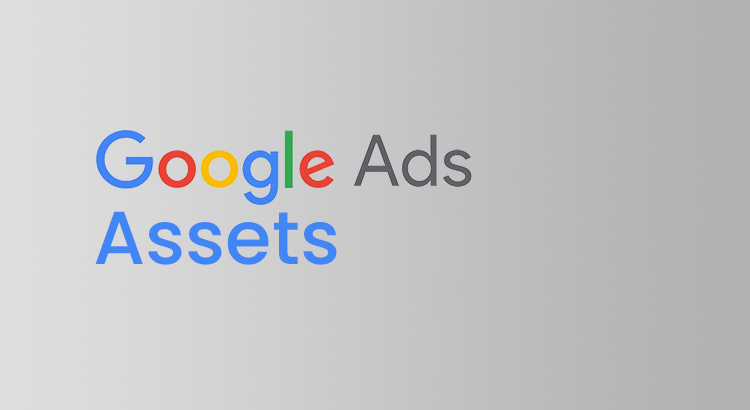Google Ad extensions offer diverse ways to enhance ad visibility and engagement. This comprehensive guide will explore the types of Google Ad extensions, delve into setting them up, provide examples.
What Are Google Ad Extensions?
Assets (formerly known as Google Ad extensions) are additional snippets of information that can be added to your text ads to provide more context and encourage user interaction. They are powerful tools to boost ad performance by offering extra details, links, or functionalities beyond the standard ad content.
Types of Google Ad Extensions
Google Ad Extensions can be broadly classified into two main categories: Automated and Manual. Automated extensions are generated by Google Ads using information from your profile or website, while Manual extensions require your active input.
Here are 12 key types of Google Ad extensions:
1. Sitelink Extensions
Google Ads sitelink extensions expand your ad’s reach by adding extra website links, enhancing user options and boosting the ad’s click-through rate (CTR). Opting for manual setup allows you to choose specific URLs, tailoring your ad for maximum impact.
When choosing the manual option, input the following for each link in your Google Ads sitelink extension:
- Sitelink Text: This is the clickable text of your link, providing a concise and compelling description of the content users can expect.
- Description Line 1 and 2: Up to two lines of text (25 characters each) that succinctly describe the page being linked. These lines serve as a brief preview, enticing users to click.
- Final URL: The URL of the page to which the sitelink directs users. Ensure accuracy and relevance to the sitelink text and description.
- Tracking Template (Optional): For more advanced users, a tracking template allows you to include URLs that send data to tracking services, providing valuable insights into user behavior.
- Final URL Suffix (Optional): This optional suffix is appended to your URL for tracking purposes, offering additional customization for tracking and analysis.
2. Callout Extensions
Google Ads callout extensions emphasize key details like sales or promotions, resembling ad description text and appearing directly after.
Whether manually or automatically set up, you can add up to 10 callouts (25 characters each) per ad, avoiding repetition from the description while ensuring campaign-wide relevance.
3. Location Extensions
Google Ads location extensions showcase your business address, automatically populating with your Google Ads account’s associated location.
Users can click to view on Google Maps, making it invaluable for businesses reliant on in-person visits like restaurants or retail stores.
4. Call Extensions
Google Ads call extensions facilitate direct calls from your ad, with phone clicks counted as ad interactions.
Trackable conversions provide insights into the extension’s impact, making it ideal for businesses dependent on reservations or bookings through phone calls.
5. Price Extensions
Price extensions in Google Ads allow immediate communication of product pricing, managing searcher expectations and potentially reducing irrelevant clicks.
Displayed as cards below the ad, you can showcase up to eight cards, making this extension versatile for various business types and offerings.
6. Promotion Extensions
Promotion extensions in Google Ads effectively showcase ongoing promotions and sales, appearing below your ad for maximum visibility.
Noteworthy is the feature allowing specific scheduling, ensuring promotions are displayed only on designated days, avoiding outdated content without manual intervention.
When setting up promotion extensions, Google Ads offers customization options:
- Occasion: Specify the event for your promotion, such as Black Friday.
- Promotion Type: Choose between flat-rate or percentage-based discounts to suit your campaign.
- Item: Clearly state the product or service name associated with the promotion.
- Final URL: Provide the landing page URL for users to access the promotion details.
- Promotion Details: Specify any requirements or conditions for the promotion, such as a minimum spend.
- Start and End Dates: Define the period during which the promotion is valid, ensuring timely and accurate promotion display.
7. Seller Ratings Extensions
Boost credibility in Google Ads by showcasing your business’s positive reviews. The seller ratings extension displays your aggregated rating on a five-star scale, derived from various online sources.
8. Image Extensions
Google Ads image extensions enhance ad appeal by incorporating visuals, resulting in a 10% CTR boost for mobile search ads, according to Google’s data.
Ideal for businesses selling physical goods, eligibility criteria include account age, policy compliance, active campaigns, text ad presence, and industry alignment.
To qualify for image extensions, certain prerequisites must be met:
- Your account must exceed 90 days in age.
- Maintain a positive history of compliance with Google Ads policies.
- Keep active campaigns running within your account.
- Ensure the continuous operation of text ads while accruing spending on a search campaign over the last 28 days.
- Verify that your account belongs to an eligible vertical; certain sensitive verticals, such as those featuring sexual content and gambling, are not eligible.
9. Structured Snippets Extensions
Structured snippets in Google Ads emphasize product or service features, displayed under the ad with category headers and corresponding values.
Similar to callout extensions, they exclusively use predefined headers like “amenities,” “brands,” and “styles.”
If you opt to utilize structured snippets in your ads, following the below-given rules is necessary:
- Do not incorporate exclamation marks, symbols, or emoticons within structured snippet values.
- Prohibit the repetition of values within the same header or across different headers.
- Refrain from adding more than one item in a field; avoid including comma-separated lists of multiple items in a single value field.
- Prohibit the use of promotional text in snippet values, such as “free shipping.”
10. Lead Form Extensions
Google Ads lead form extensions streamline lead generation by enabling searchers to complete a form directly on the search results page. Each submission counts as an ad click, charged accordingly.
11. App Extensions
For businesses with a mobile app, utilize app extensions in Google ads. These extensions provide a link for searchers to download your app, exclusive to mobile devices. Manual setup is required.
12. Affiliate Location Extensions
Tailored for businesses selling products through third-party retailers, affiliate location extensions display the nearest purchase location. Simply select your retailers, and Google Ads takes care of the setup.
How to Set Up Google Ad Extensions?
Setting up Google Ad Extensions is a straightforward process. From your Google Ads account, navigate to “Campaigns,” click on “Assets,” and then select the blue “+” button.
Choose the type of extension you want to create, input the required details, and save your settings. It’s a user-friendly process that can significantly enhance the effectiveness of your campaigns.
Related Article: How to Advertise on Google Ads?
Google Ad Extension Examples
Assets enhance ads by providing additional information or interactions. Google Ad extensions examples include options to showcase promotions, highlight reviews, display business locations, or prompt app downloads.
Summary of Google Ad Extensions
Google Ad Extensions are essential assets for advertisers aiming to elevate their campaigns. By employing these extensions strategically, businesses can provide more value to users, enhance ad visibility, and ultimately drive better results.


